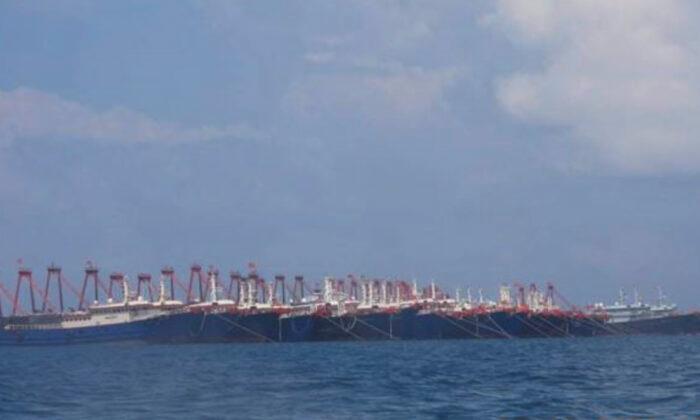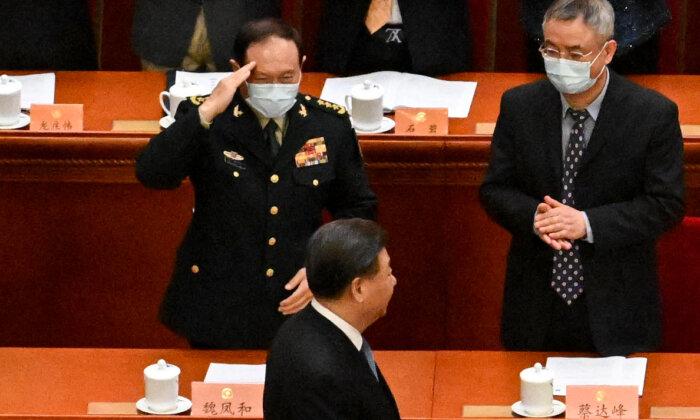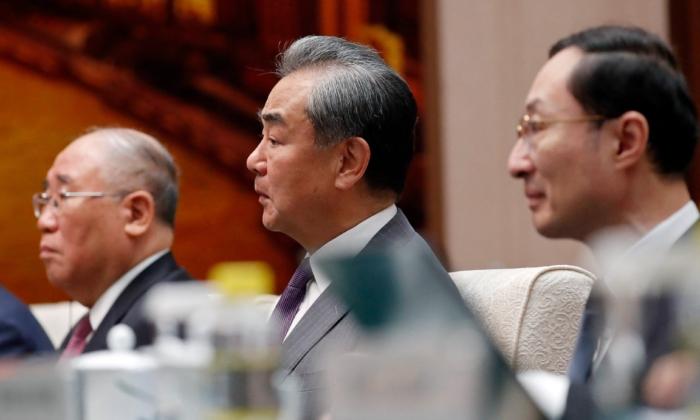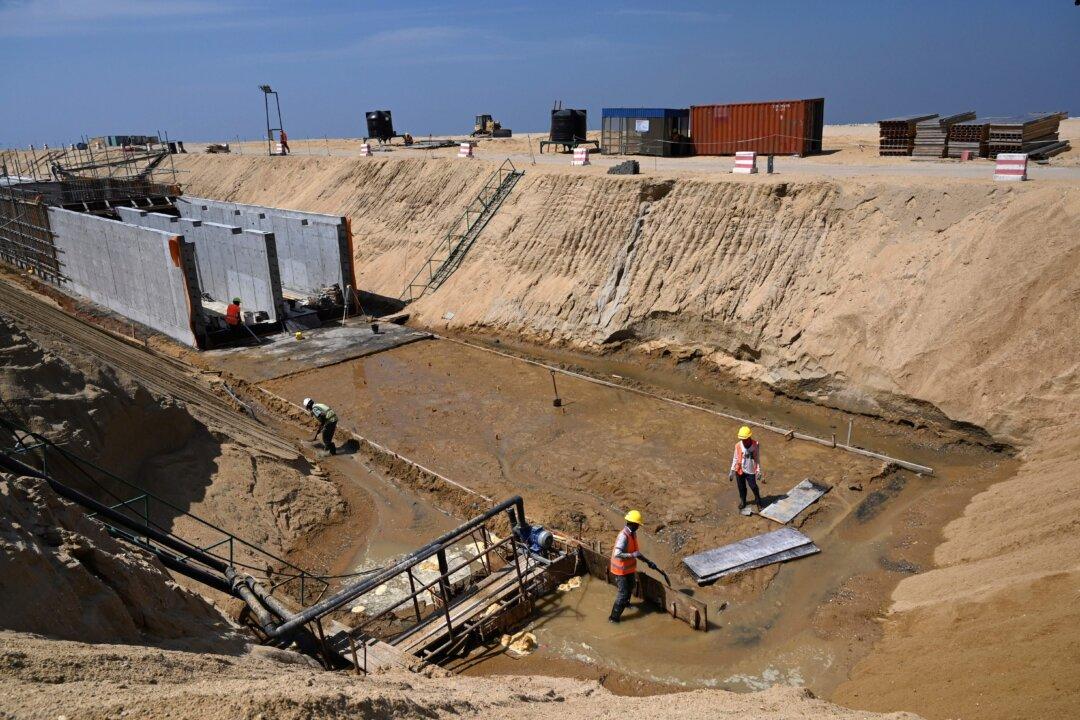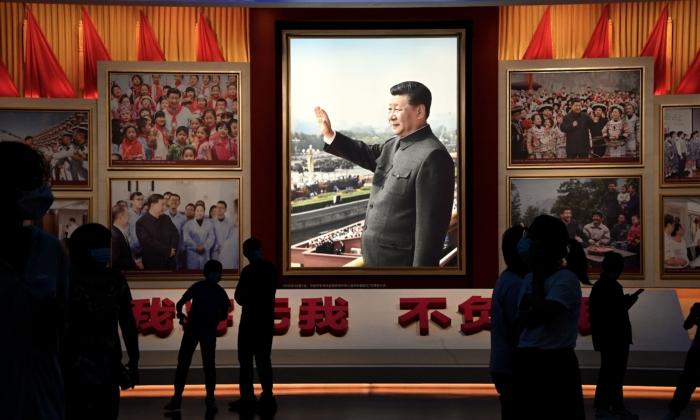The incident took place near Ecuador’s Galapagos Islands in August. When the heavily-armed U.S. Coast Guard cutter James sailed up to a fleet of a few hundred Chinese squid-fishing boats, three Chinese vessels sped away while one aggressively turned 90 degrees toward the James, forcing the American vessel to take evasive action to avoid being rammed.
According to the Nov. 1 AP report, U.S. Coast Guard cutter James’s objective was to inspect the Chinese vessels for any signs of illegal, unreported, or unregulated fishing. And it is “perfectly legal” for U.S. maritime law enforcement to board and inspect ships on the high seas as a part of the collective effort to protect the oceans’ threatened fish stocks.
“For the most part, they wanted to avoid us,” Coast Guard Lt. Hunter Stowes, the highest-ranking law enforcement officer on the James, told AP. “But we were able to maneuver effectively so that we were safe the entire time.”
Among the vessels that charged at the U.S. Coast Guard patrol was reportedly outfitted as a refrigerated cargo vessel, which serves as an offshore freezer for transporting fish back to China so that smaller vessels could stay on the water for extended periods.

A Dangerous Breach of International Maritime Protocol
The Chinese vessels eventually fled the scene after the encounter. China, meanwhile, accused the United States of wrongdoing.According to the AP report, Beijing released a statement within days of the incident. It raised the issue during an emergency meeting with U.S. Ambassador Nicholas Burns over House Speaker Nancy Pelosi’s (D-Calif.) visit to Taiwan, citing U.S. officials as sources.
China’s foreign ministry reportedly told the AP that it has “zero tolerance for illegal fishing” while accusing the United States of flouting international norms by carrying out unauthorized inspections that don’t follow COVID-19 protocols, potentially putting seafarers’ lives at risk.
Although Beijing claimed to have a “zero tolerance” attitude toward illegal fishing, it has repeatedly obstructed international efforts to strengthen inspection procedures in the South Pacific.
According to AP, the most recent stonewalling occurred last year, when China argued that fishermen would be at risk if sea patrol officers were allowed to carry firearms. Meanwhile, rules adopted unanimously in 2011 guided by a 1995 United Nations treaty, known as the Fish Stocks Agreement, allows inspectors to use limited force to stay safe.
The AP said the confrontation on the high seas represented a potentially dangerous breach of international maritime agreements and set a troubling precedent. The report added that “a fleet of 3,000 distant water fishing vessels [is] viewed as an extension of its growing naval prowess and promote[d] with generous state loans and fuel subsidies.”

China’s Maritime Militia
Seafood is key to China’s food security. The country consumes 65 million tons of fish annually, which is 45 percent of the global volume. According to official data, China maintains the largest fishing fleet in the world, with 2,701 boats and ships.
The 2014/11th issue of Chinese Militia, Beijing’s military publication, stated that China’s maritime militia should undertake logistical support for maritime operations and require relevant units to conduct effective combat training for their fishermen.
Taiwan’s Security at Risk
On Nov. 9, Chinese leader Xi Jinping called on his military to train for a “new era” and prepare for military conflict over “increased instability and uncertainty.”Since the CCP has taken over Hong Kong and its militia has occupied chunks of the Indian Ocean and the South China Sea, it is widely speculated that Taiwan is the next target.

U.S. Under Secretary of Defense for Policy Colin Kahl said an attack on the democratically self-ruled island could come anytime.
“I don’t think in the next couple of years they’re likely to invade Taiwan. But you never know,” Kahl said on Nov. 4. “[Xi] has certainly given his military the charge to have that capability by the end of this decade and probably by 2027.”
In response to the Chinese regime’s growing aggression in the region, the government in Taipei has stepped up security measures, with a strategic shift from purchases of large prestige systems, such as fighter jets and naval vessels, to smaller but just as lethal anti-ship and surface-to-air missiles.
The Taiwan Strait separates the island of Taiwan, which is the only remaining territory from the Republic of China (1911–present), from mainland China, which the Communist Party took over in 1949. U.S. naval vessels have regularly traveled through the strait, which is considered part of international waters.
Chinese Foreign Ministry spokesman Wang Wenbin emphasized at a regular news briefing in Beijing on June 13 that Taiwan is an inseparable part of China and added: “There is no such thing as international waters in international maritime law. ... Relevant countries claim that the Taiwan Strait is in international waters with the aim to manipulate the Taiwan question and threaten China’s sovereignty.”
The ministry also said that during the fishing moratorium in the winter, the CCP’s maritime militia would pose as fishing boats cooperating with its navy and coast guards to conduct joint military exercises in the waters surrounding Taiwan.
To counter the CCP’s threat, Taiwan would have to increase its coastal defense forces and patrols during the period, putting strain on the island’s limited military forces.
On Sept. 30, China’s Ministry of National Defense warned that “if the government of Taiwan does not give up its independence, there would be no peace in the Taiwan Strait and that it would not cease its military operations.”
